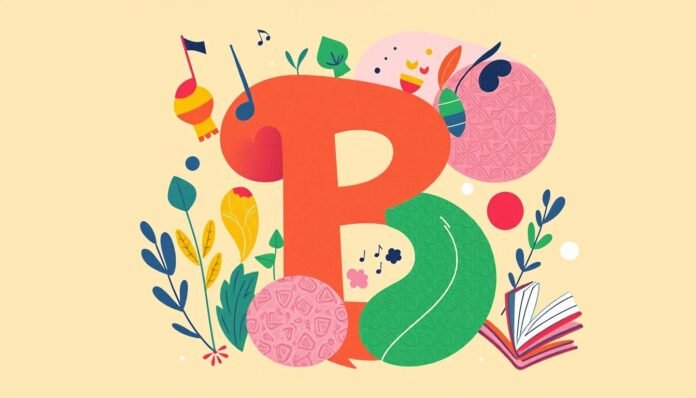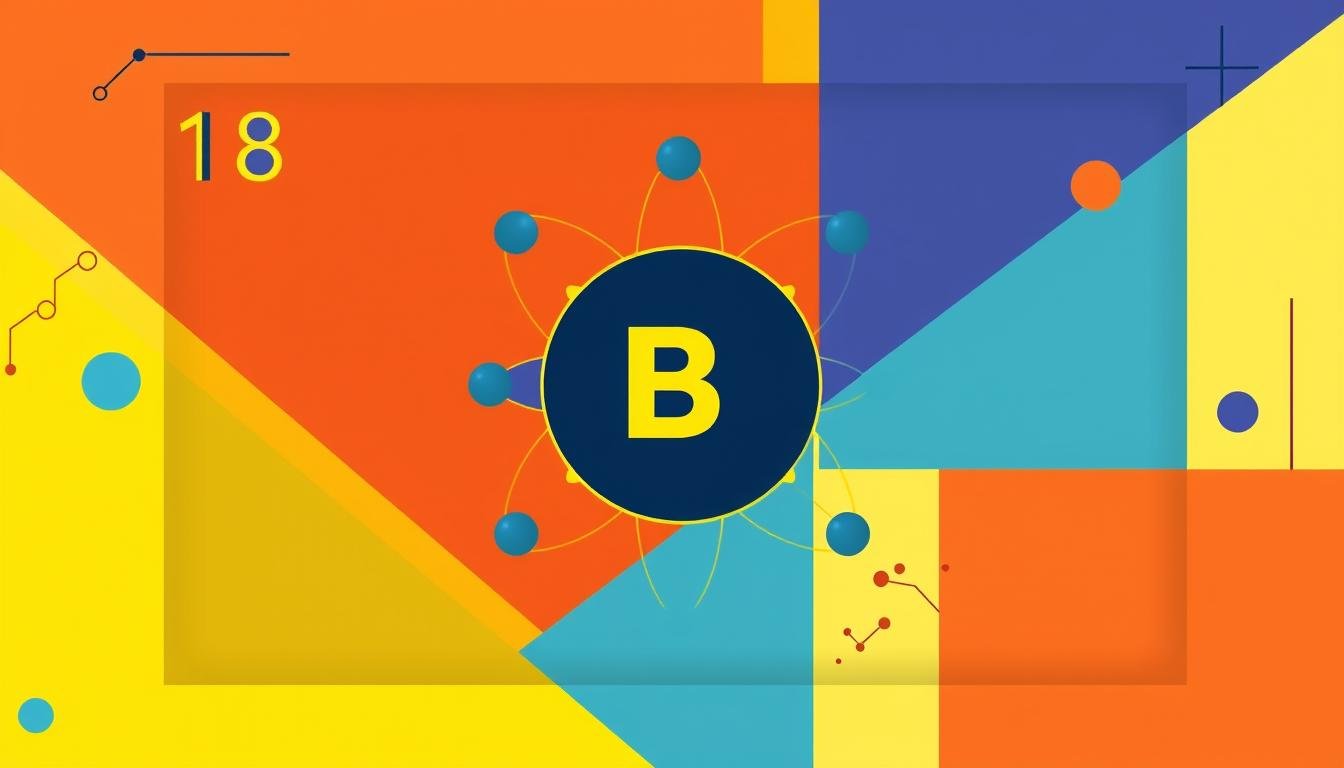The letter B is a powerful consonant in English. It hides surprising stories behind its simple shape.
This symbol connects us to ancient communication systems. It plays a crucial role in our written language.
The letter B carries a rich linguistic heritage. It appears in essential words and complex scientific terms.
This consonant bridges communication across multiple domains. We’ll uncover how B influences various aspects of life.
Get ready to discover fascinating details about this alphabet character. You’ll see the letter B in a new light.
The Origins of the Letter B
The letter B has a long history. It started in the Phoenician alphabet as a symbol for a house.
The earliest form came from the Semitic letter “bet”. It looked like a simple dwelling.
Greeks changed this symbol into “beta”. They made it part of their writing system.
The Latin script slowly changed the letter. It became closer to the B we know today.
Old evidence shows how the letter B changed. It went through many forms in different cultures.
Traders and scholars spread the letter’s use. It moved across the Mediterranean and beyond.
Experts study how B travelled through time. It connected many cultures through writing.
The Latin script made B standard. This kept its rich history alive.
The letter B is more than just a symbol. It shows how language and culture have grown together.
B’s Role in the Alphabet
B is the second letter in the English alphabet. It’s a key character with unique sounds in many languages.
B is a voiced bilabial stop. This means we close our lips before letting air out.
B helps form many essential words. It starts with words like “baby” and “brilliant”.
The letter B makes a clear, sharp sound. Our vocal cords vibrate when we say it.
Kids often find B easy to say. This makes it great for early language learning.
B sounds the same in many languages. This helps people talk across different cultures.
Fun Facts About the Letter B
The letter B holds surprising secrets. Language fans will enjoy exploring its fascinating linguistic curiosities.
In some alphabets, B looks different from English. Cyrillic scripts use В for the B sound.
Rare B words offer linguistic excitement. “Bibliophage” means a book-eating person or voracious reader.
“Brobdingnagian” describes something substantial. These words show B’s ability to capture complex ideas.
B is a voiced bilabial consonant. It’s made by pressing both lips together.
The letter B connects cultures worldwide. It carries historical importance in different writing systems.
The Artistic Side of the Letter B
The letter B becomes a canvas for artistic expression. It shows stunning creativity across many visual mediums.
Font styles can change this simple character. They turn it from a basic symbol into art.
Handwriting artists love exploring the letter B’s design. Calligraphers make intricate versions, from elegant scripts to bold shapes.
Some designers create B’s that flow like brushstrokes. Others build angular, architectural versions of the letter.
Graphic designers often play with B’s unique shape, using negative space, curves, and balance in their work.
Modern typography shows B in simple and fancy styles. These highlight its beauty and potential.
Cultural typography reveals interesting B designs from different regions. Each tradition brings its approach to this letter.
B’s visual language goes beyond just communication. It becomes an art form itself.
Digital tools have changed how artists create the letter B. The new software allows for more creativity in shaping it.
The Scientific Significance of B
B is vital in chemistry and physics. It represents boron, a unique metalloid with remarkable properties.
Boron is used in advanced materials and semiconductors. It’s also found in complex chemical compounds.
Scientific notation uses B to show very big or small numbers. This helps researchers make complex calculations easier.
In physics, B stands for magnetic field strength. Scientists use it to measure electromagnetic interactions.
Boron’s atomic structure helps us understand magnetic properties. It is useful in nuclear science and advanced materials research.
Boron absorbs neutrons well. This makes it great for nuclear reactors and radiation shields.
The letter B is key in scientific exploration. It represents complex ideas across many scientific fields.
Cultural References to the Letter B
The letter B adds rhythm to many phrases. It makes words catchy in books and songs.
Shakespeare used B words in clever ways. His phrases sound like music when spoken.
B is essential in music notes. B-flat is key in classical music.
Blues and rock often use B chords. The musical scale includes B, too.
B appears in many cultural symbols. It’s used in old alphabets and new designs.
Brand logos often feature the letter B. It’s also common in art and media.
Poets love B’s musical sound. Tongue twisters with B are fun to say.
These word games show how B can make language playful. It has a substantial impact on our culture.
The Letter B in Technology
B is a key player in digital communication and technology and a symbol of progress in modern technology.
Binary code uses 0s and 1s to speak computer language. B stands for bytes, which power devices from phones to networks.
Tech giants like Bluetooth and Bing use B in their names. This shows how important B is in tech.
B has a special meaning in coding languages. Early computer experts used B to create new ways to talk digitally.
Today, coders still use B in many ways. This shows B’s lasting impact on tech growth.
In the tech world, B is more than a letter. It’s a symbol of new ideas and digital power.
From math to brand names, B shapes how we use tech. It helps us connect with technology in new ways.
Quirky Expressions Featuring B
English idioms make language learning fun. The letter B offers colourful phrases that spice up everyday talk.
These sayings paint vivid pictures beyond literal meanings. They show how language grows and changes over time.
“Big cheese” and “bite the bullet” are examples. “Bee in your bonnet” means being obsessed with an idea.
“Beat around the bush” means avoiding direct talk. These phrases are powerful communication tools.
Cultural context shapes these quirky expressions. Native speakers use them without thinking.
Learning these sayings goes beyond grammar rules. It’s a key part of mastering English.
Other languages have colourful phrases, too. They reveal unique cultural insights.
The French say “avoir le cafard” for feeling down. It means “to have the cockroach”.
These expressions help connect with native speakers. They show cultural humour and social norms.
Learning idioms makes communication more fun and natural. It’s a great way to understand a language deeply.
Trivia and Games Involving B
Word games offer fun ways to explore the letter B. Players can enjoy educational activities that make learning interactive.
B-themed games provide an engaging approach to language skills. From spelling challenges to word-building exercises, there’s something for everyone.
Scrabble players can use high-scoring B-words like “bazaar” or “buzzed”. Crossword puzzles often feature B-words, testing vocabulary knowledge.
B-themed bingo games challenge players to find words starting with B. Language puzzles with rhyming or word association make learning vocabulary fun.
Online platforms offer digital word games with B-focused challenges. These tools help improve language skills through technology-driven activities.
Mobile apps and web-based puzzles let players explore the letter B creatively. These games entertain and expand linguistic abilities for all ages.
The Future of the Letter B
Digital communication is changing how we use letters like B. It’s now a dynamic tool in emoji culture and social media shorthand.
B has become more than just a keyboard symbol. It now bridges the traditional language and modern digital expression.
B shows increasing flexibility in online interactions. Platforms like TikTok and Twitter have made B more versatile.
“b” is now a casual term for “friend” in some circles. Creative emoji combinations use B to represent emotions and reactions.
Social media apps reshape how we understand letters. B now serves as a symbol for complex meanings.
B appears in text message slang and visual emoji representations. It proves resilient in our digital linguistic landscape.
B will likely continue to transform in the digital age. Its adaptability makes it crucial for communication across generations and platforms.
FAQ
What is the origin of the letter B?
B came from the Phoenician letter “bet,” which meant “house.” The Greeks changed it to “beta,” which became Latin B.
This journey took thousands of years across many civilizations.
How is the letter B pronounced in different languages?
B usually has a “buh” sound in English. Its sound can change in other languages.
The International Phonetic Alphabet helps make its pronunciation the same everywhere.
What does B represent in scientific notation?
In chemistry, B stands for boron. In physics, it means magnetic field strength.
B is also used in many units of measurement and science math.
Are there any interesting idioms or expressions using the letter B?
Yes! English has many B idioms, such as “busy as a bee.”
Other fun sayings are “beat around the bush” and “the bee’s knees.”
How does the letter B appear in digital communication?
B is essential in binary code and computer languages. Companies like Bing and Bluetooth use B in their names.
It’s also used in digital short forms, emojis, and social media.
What makes the letter B unique in the alphabet?
B is the second letter and a key consonant. It has changed a lot from old writing to now.
B has a rich history and is used in many languages.
How is B used in artistic expression?
B shows up in typography and calligraphy. Artists explore creative ways to show B in their work.
Different fonts and writing styles show how pretty B can look.
Can you play language games focused on the letter B?
Yes! There are many fun B games like B-themed bingo.
Word-building games and spelling contests also use B a lot.
you may also read: Cursive B: Elevate Your Handwriting Skills

